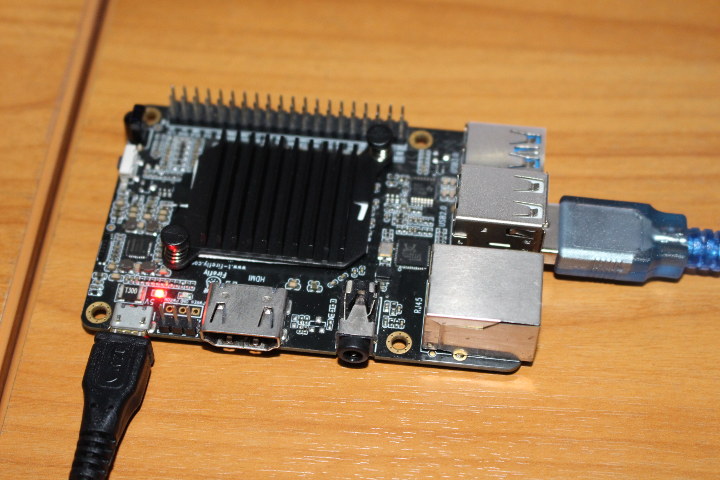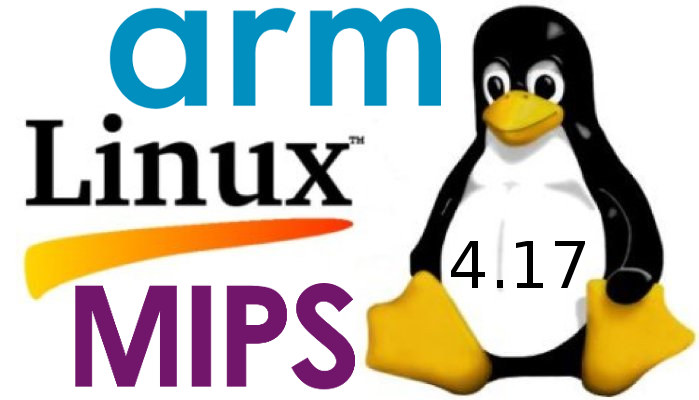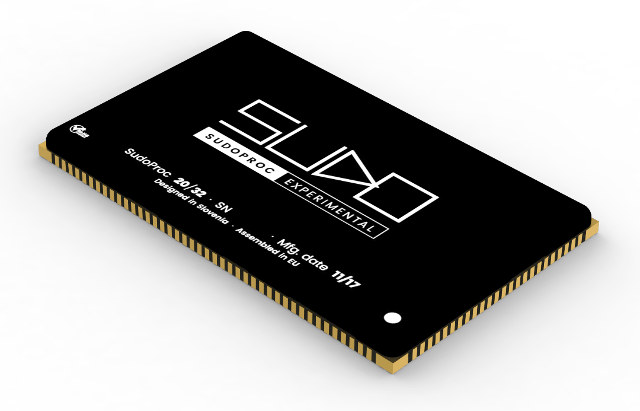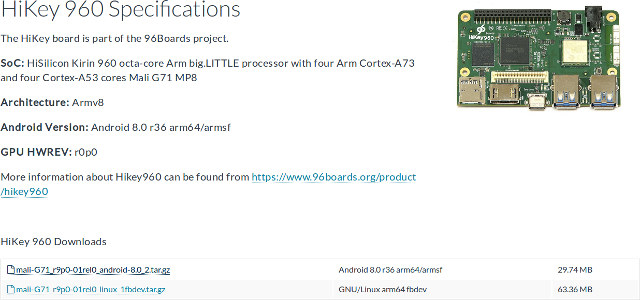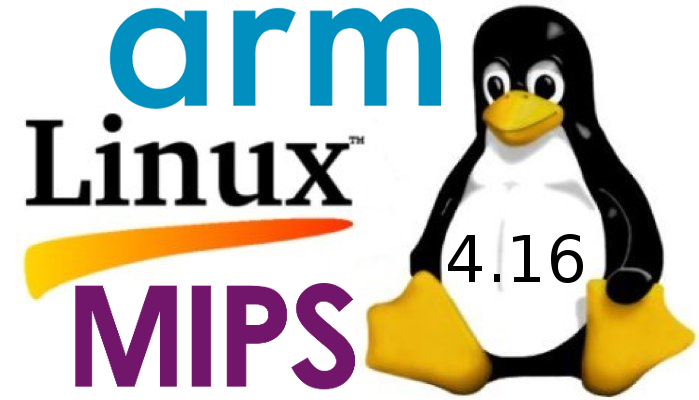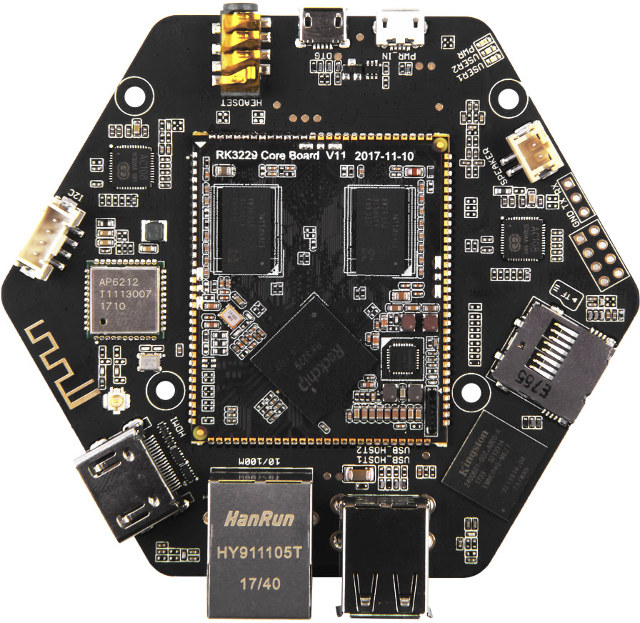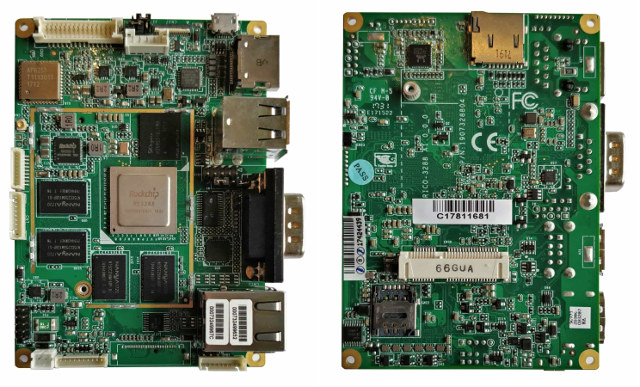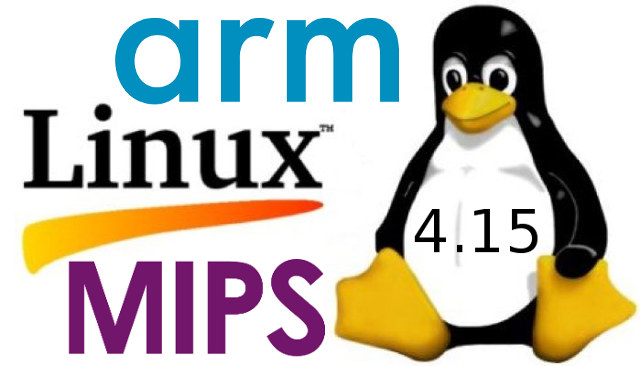It’s been possible to flash firmware to Rockchip devices in Linux with upgrade_tool command line tool for many years, but the utility is closed-source and only supports “RK Firmware” files that are also used for OTA firmware updates, but not “raw firmware” that you’d flash directly to micro SD cards for example. This week-end as I played with ROC-RK3328-CC board, I encountered some instability issues with micro SD cards, so I instead relied on an eMMC flash module. The only problem was that Firefly Team only releases “raw firmware” files, so I was unable to use upgrade_tool, and instead found out rkdeveloptool open source utility was used to flash raw firmware images in Firefly’s Wiki. The first step is to connect a male to male USB Type A cable (like that one on eBay) between the board and the host computer, and connect a USB power adapter to the board. […]
Linux 4.17 Release – Main Changes, Arm & MIPS Architectures
Linus Torvalds released Linux 4.17 last Sunday: So this last week was pretty calm, even if the pattern of most of the stuff coming in on a Friday made it feel less so as the weekend approached. And while I would have liked even less changes, I really didn’t get the feeling that another week would help the release in any way, so here we are, with 4.17 released. No, I didn’t call it 5.0, even though all the git object count numerology was in place for that. It will happen in the not _too_distant future, and I’m told all the release scripts on kernel.org are ready for it, but I didn’t feel there was any real reason for it. I suspect that around 4.20 – which is I run out of fingers and toes to keep track of minor releases, and thus start getting mightily confused – I’ll switch […]
SudoProc is a Tiny LGA System-on-Module Based on Rockchip RK3288 SoC
Most systems-on-module are designed to be inserted into a baseboard thanks to an edge connectors or one or more board-to-board connectors, although I’ve also seen some with castellated pins allowing them to be soldered to the carrier board. The guys at Sudo Systems LLC have taken a different approach as they went with a custom designed 210-pin LGA (Land grid array) module instead, which is based on Rockchip RK3288 processor, and extremely compact at 65 x 40 x 4.3 mm. SudoProc module specifications: SoC – Rockchip RK3288 quad core Cortex-A17 processor @ up to 1.8 GHz with Arm Mali-T764 GPU System Memory – 4GB LPDDR3 (Samsung) @ 1066MHz; 2 x 32 bit, dual channel Video Decoding – H.264 decoder @ 2160p@24fps, H.265 decoder @2160p@30fps, and H.264/MVC/VP8 encoder 1080p@30fps Storage – 32GB, 64GB, 128GB, 256GB or 512GB eMMC 4.5 flash LGA package with 210 pins exposing: Storage I/F – 8-bit NAND […]
Arm Releases Android / Linux Vulkan User Space Drivers for Mali GPUs (HiKey 960, Firefly-RK3288 Boards)
A little while ago, I wrote about Imagination’s PowerVR CLDNN Neural Network SDK and Image for Acer Chromebook R13, and some people looks into the Arch Linux Arm image and were pleasantly surprised to find Vulkan drivers, as it was the first Arm platform support Vulkan in Linux. It looks like there are now more Arm hardware supporting Vulkan drivers in Linux, as Arm has released binary user-space components for GNU/Linux and Android for development platforms featuring the Arm Mali Midgard GPU family, and – provided the GPU can handle it – supporting the following APIs: OpenGL ES 1.1 / 2.0 / 3.0 / 3.1 / 3.2, OpenCL 1.1 / 1.2 / 2.0, Vulkan 1.0, and RenderScript. Mali-G71 GPU is supported by Android 8.0 and Linux (fbdev) ARM64 drivers for Hikey 960 board, and Mali-T760 should be supported by Linux drivers (fbdev / wayland / X11) for Firefly-RK3288 board. Hikey […]
Linux 4.16 Release – Main Changes, Arm and MIPS Architectures
Linus Torvalds has just released Linux 4.16: So the take from final week of the 4.16 release looks a lot like rc7, in that about half of it is networking. If it wasn’t for that, it would all be very small and calm. We had a number of fixes and cleanups elsewhere, but none of it made me go “uhhuh, better let this soak for another week”. And davem didn’t think the networking was a reason to delay the release, so I’m not. End result: 4.16 is out, and the merge window for 4.17 is open and I’ll start doing pull requests tomorrow. Outside of networking, most of the last week was various arch fixlets (powerpc, arm, x86, arm64), some driver fixes (mainly scsi and rdma) and misc other noise (documentation, vm, perf). The appended shortlog gives an overview of the details (again, this is only the small stuff in […]
ReSpeaker Core v2 is a 6-Mic Array Audio Development Kit Powered by Rockchip RK3229 Processor
Seeed Studio launched ReSpeaker Core board designed for voice interaction in 2016. The board was based on a Mediatek MT7688 MIPS WiSoC running OpenWrt, and came with a single built-in microphone, although a microphone array board with 7 microphones and 12 LEDs was also offered as option. The company is now back with a more powerful update of the board – called ReSpeaker Core v2 – featuring Rockchip RK3229 quad core Cortex A7 processor, running Debian Linux, and with 6 on-board microphones. Beside WiFi connectivity, the board also adds Ethernet and Bluetooth 4.0, as well as a USB hot port compared to the previous version. ReSpeaker Core v2 specifications: SoC – Rockchip RK3229 quad core Cortex A7 processor @ up to 1.5 GHz with Arm Mali-400MP2 GPU System Memory – 1GB DDR3 RAM Storage – 4GB eMMC flash, micro SD card slot Video Output – HDMI 2.0 (but drivers not […]
Amarula Vyasa is a $150 Pico-ITX Single Board Computer Powered by Rockchip RK3288 SoC
Yesterday, as I published Linux 4.15 changelog for Arm and MIPS, I discovered a new Rockchip RK3288 platform described as “Amarula Vyasa single board computer”, so that got me interested. The full name of the company is “Amarula Electronics Limited Sony UK”, which means Vyasa is the name of the board. Amarula Vyasa relies on a 2.5″ Pico-ITX form factor, and is available in either commercial and wide temperature (WiTAS) range. The board is equipped with 2GB RAM, 16GB eMMC flash, exposes ports and connectors such as HDMI 2.0, eDP, and LVDS, and plenty of network connectivity (WiFi, Ethernet, mPCIe modem…) that would make it suitable for a connected digital signage, or other applications requiring a (touchscreen) display and redundant Internet / network connectivity. Amarula Vyasa specifications: SoC – CPU Rockchip RK3288 (ARM CortexTM -A17 Quad-core 1.6GHz) System Memory – 2GB DDR3L SDRAM Storage – 16GB eMMC flash, Micro SD […]
Linux 4.15 Release – Main Changes, Arm and MIPS Architectures
Linus Torvald has released Linux 4.15 last Sunday: After a release cycle that was unusual in so many (bad) ways, this last week was really pleasant. Quiet and small, and no last-minute panics, just small fixes for various issues. I never got a feeling that I’d need to extend things by yet another week, and 4.15 looks fine to me. Half the changes in the last week were misc driver stuff (gpu, input, networking) with the other half being a mix of networking, core kernel and arch updates (mainly x86). But all of it is tiny. So at least we had one good week. This obviously was not a pleasant release cycle, with the whole meltdown/spectre thing coming in in the middle of the cycle and not really gelling with our normal release cycle. The extra two weeks were obviously mainly due to that whole timing issue. Also, it is […]


